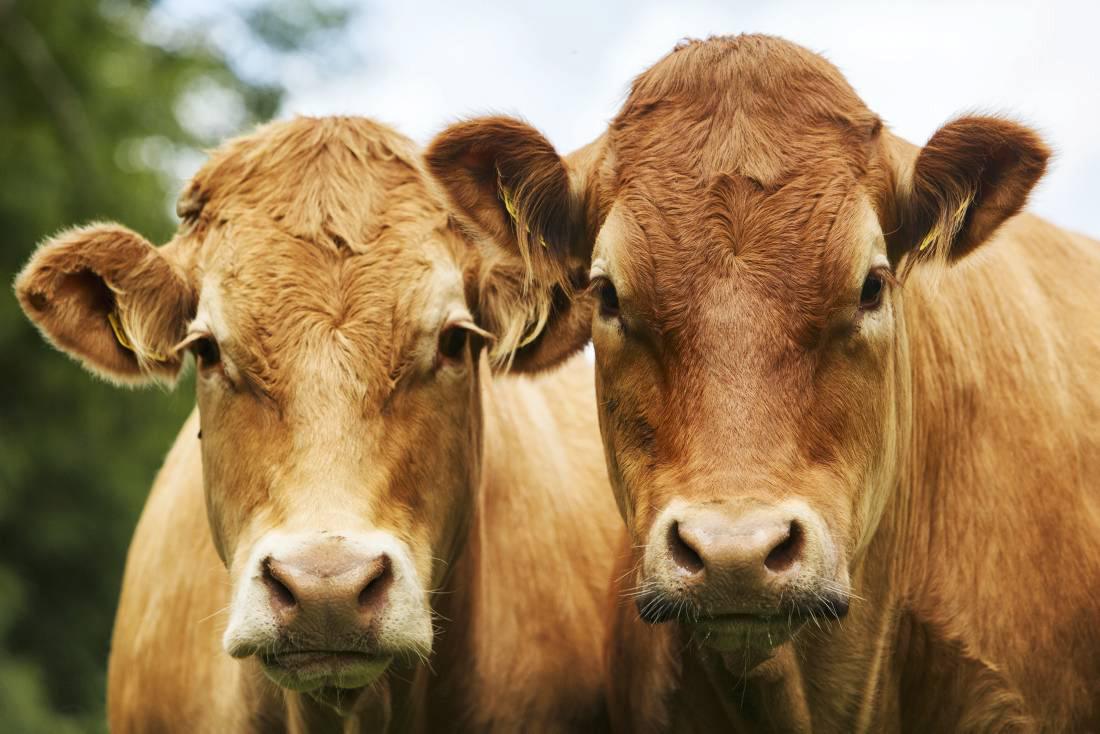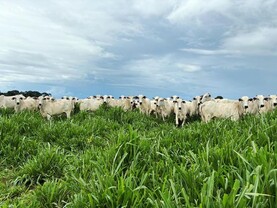The European Union is the third largest beef producer globally and it is currently experiencing a reversal in the prolonged trend of falling cattle numbers. Production is anticipated to increase from 2014, by 1.4%, with a further 2.3% output rise projected for 2015.
The growth in output is mainly driven as a consequence of dairy sector expansion, plus increasing cattle numbers in eastern European countries. As a result, higher output is forecast in member states with strong dairy industries, including Ireland, the UK, Poland, the Netherlands and Germany.
Additionally, low current cereal prices encourage more feeding on fattening units which, combined with an ample supply of good quality forage across Europe, could result in carcase weights being higher than anticipated and thus contribute further to production increases in the near term.
Medium-term projections from Bord Bia anticipate a rise in EU output for this and next year, thereafter production will remain quite stable, with some easing to 7.45 million tonnes (Mt) towards 2019.
As well as rising supplies, there is an improving outlook for EU beef demand over the next five years. As economic growth returns to Europe, so too will consumer confidence and spending power, which will help stabilise beef consumption levels.
Furthermore, in terms of trade, the EU is expected to remain a net exporter of beef for each of the next five years. This is a radical change from the situation that prevailed from 2002 to 2011, when substantial trade deficits in beef and higher net beef imports were a common occurrence in Europe.
EU exports are anticipated to rise by 50% by 2019 to 270,000t. Strong increases in global beef demand and prices, along with supply constraints in major southern hemisphere countries, will all help bolster this export trade.
North Africa, the Middle East and Asia will offer new market opportunities to EU exporters (see Figure 1), especially for byproducts and select cuts.
Beef landscape: drivers of change
Looking forward, the level of beef production in the EU will be linked to dairy sector dynamics, public policies (the beef sector is particularly sensitive to World Trade Organisation agreements and Common Agriculture Policy), and the price balance between crop and animal production. The following factors will be highly influential in this changing landscape.
EU dairy evolution
Beef production in the EU is strongly influenced by changes in the dairy sector. Around two-thirds of all cows in the EU are dairy cows and this is much higher in new member states, at around 90%.
The shrinking beef cow herd and expanding dairy cow herd trend is forecast to continue, with the majority of expansion taking place in northern European countries. This trend will be supported by low feed prices and firm milk prices.
The most significant cuts in the beef cow herd are anticipated in Ireland (200,000 head decline in the last two years) and the UK (100,000 head decline in last three years). For the new member states, there is a sustained restructuring of the cattle sector in these countries. This will see commercial farming interests dominating the market place and expanding quickly at the expense of smaller farms.
Changing EU land use
The dynamics of land use changes for the European beef sector will be heavily influenced by internal CAP decisions and evolution in the dairy sector. So what land use changes are likely in the EU beef sector?
While it is difficult to predict, there are a couple of certainties. Milk quota abolition, along with decoupling of direct payments, will encourage the expansion of the dairy industry, particularly on more fertile soils. This will happen at the expense of less profitable enterprises.
The grain market may also have an impact. In strong dairy markets, farmers are encouraged to drive output and increase milk yield per cow, especially where land is limited. This is most likely in northern EU states (such as Denmark and the Netherlands), where intensification is already high due to limited land availability.
France has the largest suckler herd in the EU, accounting for 34% of EU livestock. It is possible that the herd will be concentrated more on disadvantaged or marginal land. However, cow numbers will probably be maintained there due to a coupled support plus favourable environment payments on extensive terrain. Indeed, should it become necessary to increase the herd of EU suckler cows to sustain a critical level of high-quality beef production, France is surely the country in the EU with the greatest potential to do so.
Consumption challenge
Beef consumption appears to be recovering somewhat in most developed countries, but overall meat demand appears to have peaked. The difficult economic environment in several key EU markets continues to impact consumption, with retail sales volume back 2% to 3% in some markets.
Consumer purchasing power is a key determinant of meat consumption per capita and, ultimately, demand. This is particularly true in the beef sector, where prices are generally higher than those for other animal proteins. That said, the outlook for EU beef demand is positive in the medium-term.
EU imports
Imports into the EU have been falling since 2008. Recent trends indicate that imports into the EU from Brazil, Uruguay and Argentina are in decline, with import volumes 40% below peak levels. This decline has been driven by a combination of factors, namely rising CAP compliance costs, strong demand from emerging countries, a relatively weak euro and competition for land from other land uses.
EU beef imports are expected to show a modest increase by 2022 (from 334,000t in 2013 to 360,000t). But of far greater significance to the Irish beef industry is EU policy on market access to high-quality beef products. While it was initially limited, the duty-free EU select-cut import quota has recently been increased and its scope broadened. So while overall imports into the EU have decreased, imports into the high-value market segment have increased in recent years.
Much of the growth in EU imports is likely to come in the highest quality segment. With the US, Canada and Australia all jostling for position to fill the newly enhanced 50,000t quota for high-quality beef, import growth from traditional suppliers will be limited.
Indeed, imports in 2014 show this renewed focus and this is the first time that the Hilton Beef Quota (HBQ) will be fully filled since it was increased in 2012. At the same time, the quota management system changed to a first come, first served basis.
In future years, any concession on expanding this import quota (resulting from WTO, TTIP or Mercosur negotiations) would be a significant threat to the Irish beef sector. The HBQ will greatly intensify competition in a very specific EU market segment, where fresh Irish beef exports are currently the dominant player.
To help Irish beef maintain its dominance and price premium over other-origin beef, the industry here needs to produce and promote a quality differentiated beef product. The main points of difference will be sustainable, quality assured farms, using grass-based production systems and dedicated beef suckler herds.
Russian export alternatives
The recent suspension of EU imports by Russia reduces the market options available to exporters. However, shipments to Russia from the EU stood at just 32,000t in 2013 and 46,000t in 2014. Since the import ban, the EU has been able to redirect that Russian trade to alternative third country destinations – mainly the Balkans and Asia.
With reduced competition on the world market, as south America focuses on expanding its exports to Russia, demand and access for EU beef to third country markets will increase in the coming years. This may also present new export opportunities. Overall, the Russian import ban is unlikely to have a major impact on global beef markets and Brazil is likely to be the main beneficiary.






 This is a subscriber-only article
This is a subscriber-only article










SHARING OPTIONS: